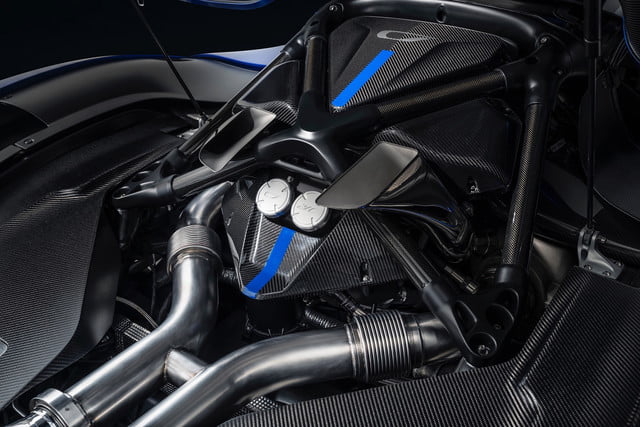China3D printingNet July 5th,Divergent 3DIs an interesting start-up company with3D printingThe finished super sports car attracted readers and auto show participants.The company still exists and is for high-performance vehicles3D printingParts, but it seems to do so in a separate subsidiary. Its latest project is to participate in super sports cars with up to 1,232 horsepower engines.
Divergent 3D’s blade supercar has a very unique concept: modular design is made of3D printingIt is composed of metal nodes that connect the various parts of the car chassis (including carbon fiber rods) together. BladeThe power-to-weight ratio is twice that of the Bugatti Veyron,BladeIt can accelerate from 0 to 60 mph in 2.2 seconds, which is faster than McLaren P1.

3D printing
The blade supercar” alt=”
3D printing
The blade supercar” width=”620″ height=”310″ />
3D printingofBlade Supercar(Picture provided by Divergent 3D)
In cooperation with SLM Solutions, Divergent 3D uses the company’s metal powder bed fusion technology to3D printingMetal nodes. Through the PSA Group, the luxury car manufacturer of the Peugeot brand, the startup’s goal is to produce 10,000 to 20,000 cars per year.

3D printing
The NODE is used to connect the carbon fiber rod of the blade supercar” alt=”
3D printing
The NODE is used to connect the carbon fiber rods of the blade supercar” width=”620″ height=”372″ />
3D printingNODE is used to connectBladeCarbon fiber rods for super sports cars. Image courtesy of Divergent 3D.
This is not the first time Divergent founder Kevin Czinger has tried to start a successful car manufacturer. It is not easy. In 2009, he founded CODA Automotive, which sold 117 electric vehicles before filing for bankruptcy in 2013. While Czinger and CODA are trying to reduce exhaust emissions in Divergent, he has said that he hopes to reduce greenhouse gas emissions. The entire automotive industry.
According to Czinger, the company’s patented process can potentially reduce emissions from the actual car manufacturing process, not just car emissions. If we can apply Divergent’s technology to a traditional 5-seater car, Czinger suggests that it can reduce its weight by half and the number of parts by 75%.
Another company called Czinger Vehicles announced in March that it had built a supercar 21C. Both Divergent 3D and Czinger Vehicles are subsidiaries of the larger Divergent Technologies, and so far, the company has raised $150 million in investment funds.

3D printing
\n21C engine of the component” alt=”Look at having
3D printing
The 21C engine of the component” width=”620″ height=”414″ />
Look at having3D printing21C engine of the component.
Czinger’s goal is to produce 80 new 21C vehicles, many of these vehicles are printed with aluminum alloy, and the exhaust system uses Inconel. 3D printingTechnology, the a-pillar part on both sides of the windshield adopts titanium alloy printing technology.It’s even faster thanBladeFast, reaching a speed of 60 mph in 1.9 seconds,HighestA maximum speed of 268 mph was reached. One of the important factors that distinguish a supercar from a sports car is horsepower. The 21C has 1,232 twin-turbocharged 2.9-liter V8 engines, which will also be connected to two electric motors, making it a hybrid gasoline-electric car.
Soon after the initial news about 21C was released, Divergent 3D announced that it had reduced its employees by about one-third due to the COVID-19 pandemic. In other words, the timetable may be tentative.According to China3D printingThe network understands, but still guarantees the long-term stability of the company, maintains the core team and activities related to R&D and customer planning.
althoughCOVID-19The pandemic caused setbacks for Divergent 3D, but Czinger Vehicles will continue to develop new supercars. The price of 21C hand-built in Los Angeles is 1.7 million U.S. dollars, and the delivery time is planned for 2021.
(Editor in charge: admin)


0 Comments for “Divergent 3D launches 1232-HP supercar with 3D printed parts”